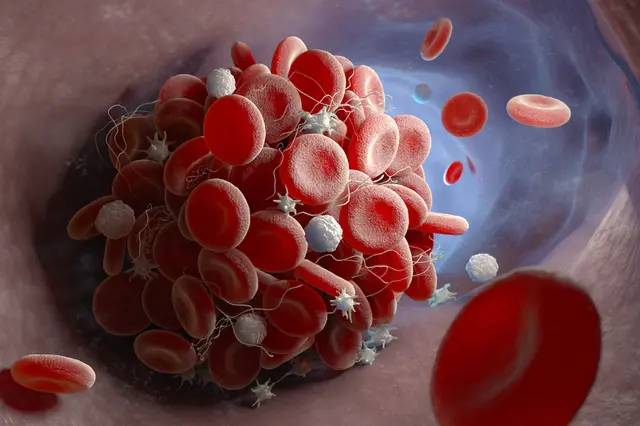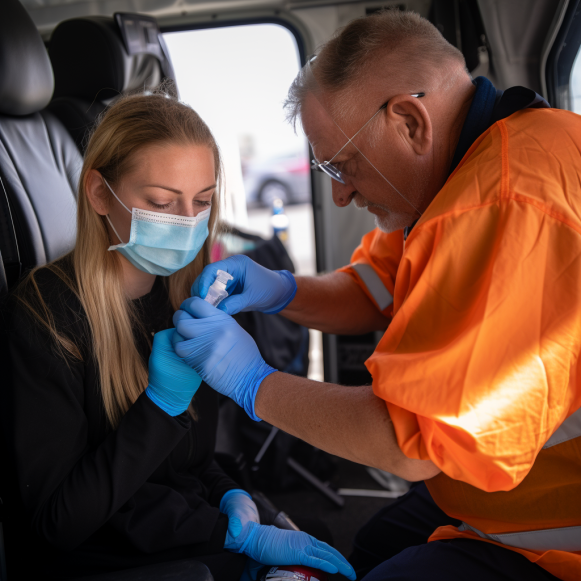FDA’s Failure to Safeguard the Public Resulted in Irreparable Erosion of Trust

In this series, “Promise or Peril: Alarming COVID-19 mRNA Vaccine Issues,” we look at how mRNA vaccines are poorly regulated, which sets the stage for major safety and quality concerns.
Part 6 examines the consequences of the “lagging” regulatory framework for COVID-19 vaccines. The US Food and Drug Administration (FDA) established special emergency guidance for manufacturers of COVID-19 vaccines in June 2020; this special guidance expires on November 7.
When introducing new products, the FDA approval process is intended to protect human health. As previously established (in Part 1), mRNA is gene therapy, but the FDA has exempted vaccines from the standard testing requirements imposed on gene therapy products. Not only is the regulatory framework “lagging,” but the FDA guidance appears to have failed in its duty to properly test these new products.
FDA Error or Intentional Bypass?
Despite the fact that RNA therapeutics have been in development for over a decade, when messenger RNA (mRNA) technology was proposed for COVID-19 vaccines, a new set of regulatory rules were put in place to expedite production. The new rules allowed manufacturers to submit test results on similar products instead of specific vaccine components.
Did this loosening of the rules have unintended consequences? Yes, most likely.
Gene-based therapies hold the promise of personalized treatment for difficult conditions such as cancer, hereditary diseases, autoimmune and infectious diseases. In theory, disease-causing genes can be replaced, inactivated, or modified by delivering DNA or RNA fragments directly to affected cells. It is the foundation upon which the mRNA vaccines were created.
However, several troubling findings about mRNA injections have emerged in the literature and in scientific circles that require immediate attention. Parts 2, 3, and 4 of our series focused on these topics. In this article, we will discuss why mRNA gene therapy was developed and the rules that such products must abide by.
Technology for Gene Therapy
Direct injection treatment can be difficult to administer. Proteins, for example, must adhere to size constraints, fold correctly, and be stabilized in order to reach their intended target.
In contrast, delivering genetic instructions to produce a life-saving protein or turn off a malfunctioning gene holds great promise for parents of children with a hereditary disorder.
Once inside the cell, a broken gene is repaired or a missing protein, such as insulin in Type 1 diabetes patients, is produced. In 2018, the FDA approved the first RNA-based therapy to treat peripheral neuropathy. This is a lovely model for delivering on-demand biologics that the body requires to function properly.
Using mRNA to deliver a snippet of genetic code appears to be an appealing idea. Because human cells take over the production process, the protein does not need to be perfectly packaged.
Because RNA was too delicate, gene therapy was initially focused on DNA technology. However, in human trials, the DNA-based therapeutics did not perform well. Concerns were also raised about integration into the human genome. The focus of researchers then shifted to synthetic RNA-based therapeutics, paving the way for the development of vaccines based on the new mRNA technology.
The Transition to RNA-Based Technology
The rapidly disintegrating RNA appeared to have some safety advantages over DNA, namely that RNA would remain in the cytoplasm rather than entering the nucleus, and thus would be present in the body only transiently. These advantages were used to deliver the SARS-CoV-2 vaccine via the mRNA platform. However, as we discussed in Part 4, the vaccine mRNA remains in the body for at least 60 days after vaccination.
In 1990, the first proof-of-concept animal study for in vitro-transcribed mRNA was conducted. Numerous studies have been conducted since then to overcome challenges related to mRNA fragility and the immune system’s proclivity to attack foreign mRNA. In other words, if the body destroys the mRNA before it can produce new proteins, the vaccine is rendered ineffective.
Vaccine technology is shifting toward this approach because it has the advantage of stimulating cellular immunity (T-cells) as well as antibodies, as the influenza (flu) shot does.
“Genetic immunization may promote superior adaptive immunity by activating both humoral and cell-mediated responses, and has manufacturing advantages over traditional vaccines,” according to a study published in 2020 by Bloom et al. Both arms of the immune system are critical: antibodies prevent viruses and bacteria from entering cells, while T-cells identify and destroy infected cells.
Traditional flu shots work moderately well because they rely on antibodies to do the difficult work of preventing the influenza virus from entering cells. However, without a strong T-cell response, the body is less prepared to attack infected cells.
The FDA avoided requiring ‘Gene Therapy’ testing.
The regulatory framework that oversees gene therapies was established by the same agency that oversees vaccines and other biologics.
Gene-based therapies and vaccines are both regulated in the United States by the FDA’s Center for Biologics Evaluation and Research (CBER).
Despite the fact that CBER monitors both gene therapies and vaccines, the regulatory framework for DNA and RNA “therapeutics” differs from that for “vaccines.” The FDA’s guidance excludes vaccines from the biodistribution studies that are otherwise required for gene therapy products.
“The success of the messenger RNA-based COVID-19 vaccines of Moderna and Pfizer/BioNTech marks the beginning of a new chapter in modern medicine,” wrote Vervaeke et al. in a 2022 review. However, the rapid rise of mRNA therapeutics has resulted in a lagging regulatory framework.”
While the regulatory pathways are similar, RNA therapeutics must undergo pharmacokinetic testing to determine what happens to the product once it enters the body. Surprisingly, as we discussed in Part 1, mRNA vaccines were not required to undergo human biodistribution testing and instead relied solely on animal studies. Furthermore, because the studies used a luciferase-encoding mRNA surrogate in place of a spike protein-encoding mRNA, these animal biodistribution studies only looked at the lipid nanoparticle (LNP) capsule and not the mRNA cargo.
It is critical to investigate the actual components of new technologies. Using a surrogate instead of the spike protein is a problem because it prevented the FDA from fully understanding the spike protein’s effects on the body. Furthermore, the animal models did not investigate the biodistribution of the spike protein or its subunit (S1) in the body, despite the fact that we were told it breaks down quickly.
For vaccine regulations, the European Medicines Agency (EMA), the European Union’s equivalent to the FDA, refers to the World Health Organization. In response to the pandemic, the FDA developed its own guidelines.
Both the EMA and the FDA require biodistribution studies before an RNA gene therapy can be tested in humans. Individual components can be tested in these studies. This would include components such as the LNP capsule, the spike protein, and the combined final product in the case of the COVID-19 mRNA vaccines.
However, because the EMA and FDA do not consider mRNA vaccines to be “gene therapy” products, they do not require biodistribution studies (Vervaeke et al. Table 1). While the FDA did not align regulatory oversight for mRNA vaccines with gene therapy rules, Moderna, a National Institutes of Health-funded company, stated in a June 2020 Securities and Exchange Commission filing, “Currently, mRNA is considered a gene therapy product by the FDA.”
If the FDA considers mRNA to be gene therapy, the mRNA vaccines should have gone through the same safety testing as all other gene therapy products. How did they manage to avoid this testing?
A therapeutic used to treat someone with a serious terminal illness should have a very different risk-benefit analysis than one used to treat a large healthy population. The FDA should not have used the pandemic to abdicate its responsibility for mRNA vaccine safety oversight and regulation.
Failure of the FDA to Protect the Public
Even in the midst of a pandemic, human studies could have been conducted. The rat models used to test biodistribution of mRNA products, for example, began in July 2020 and were completed two months later. Human studies are typically completed early in the drug development process and are required for an investigational new drug application to the FDA. Such a study requires only six volunteers and could have been completed quickly. Six volunteers, for example, took part in a biodistribution study that was completed in 24 hours in this study.
Given the FDA’s authority in shaping health policies, despite not directly treating patients as doctors do, every policy or action they take has significant implications for the collective well-being of individuals across the country, if not the world.
The FDA is the human safety gatekeeper. Its ultimate responsibility is to protect people’s health and well-being while remaining free of pharmaceutical industry influence. Nonetheless, the FDA continues to hold mRNA vaccines to a lower standard than gene therapy products. copy of the “Nonclinical Biodistribution Considerations for Gene Therapy Products Guidance for Industry,” which was released in May 2023, states, “This guidance does not apply to prophylactic vaccines.” Why?
The “revolving door” phenomenon, in which people leave the FDA to work for a large pharmaceutical company, should be strictly prohibited because it jeopardizes the FDA’s mission. According to Prasad and co-authors’ research letter, 57% of drug reviewers who left the FDA went to work for or provided consulting to the pharmaceutical industry.
The transition from being a regulator to advising businesses, or vice versa, would unavoidably raise conflict of interest concerns, casting doubt on whether someone could act in the public interest. They may be easily swayed by the economic return when evaluating novel biotechnology, rather than adhering to the ethical principle of “first do no harm.”
Not every novel technology is risk-free and risk-free. Because of the serious nature of the associated risks, a technology with the potential to affect the human genome should be handled with greater caution.
The FDA should strictly adhere to the standard pharmacokinetic, biodistribution, and safety data required for new drug registration.
The FDA should also adhere to the ethical principles that govern the regulation of a new drug intended for use in a generally healthy population. As an example, placebo controls should be biologically inert (i.e., saline) in order to identify adverse events and estimate their frequencies more accurately. As with the HPV vaccine studies, a “pseudo” placebo was used to mask the vaccine’s safety concerns.
The Decline of Public Trust
Several factors contributed to the promise of mRNA vaccines in saving lives. One advantage of using RNA instead of DNA was its improved safety profile. Another novelty was the rapid encoding of an antigen (the spike protein) as an immune target. Finally, the mRNA and the lipid nanoparticle delivery capsule were found to be highly immunogenic, eliciting a robust immune response even in older adults, indicating that they could be used as an adjuvant.
However, by purposefully creating two different distribution pathways for RNA therapeutics and vaccines in order to expedite distribution, regulatory oversight was severely weakened, resulting in a loss of public trust in our regulatory agencies. Many of the current adverse events could have been predicted if the same human biodistribution studies and adequate safety and toxicological studies had been performed as required for drugs.
Given the pandemic’s urgency, the urgent production of a lifesaving vaccine for those at high risk might have been considered reasonable had public health officials not simultaneously and emphatically advocated for a one-size-fits-all vaccination for the entire population. Nonetheless, these studies have not been completed, resulting in a catastrophic loss of trust in our regulatory agencies.
We advocate for a revitalized FDA that diligently fulfills its primary responsibilities in protecting the public’s health and safety. This includes maintaining unwavering ethical principles based on human well-being in perpetuity.






